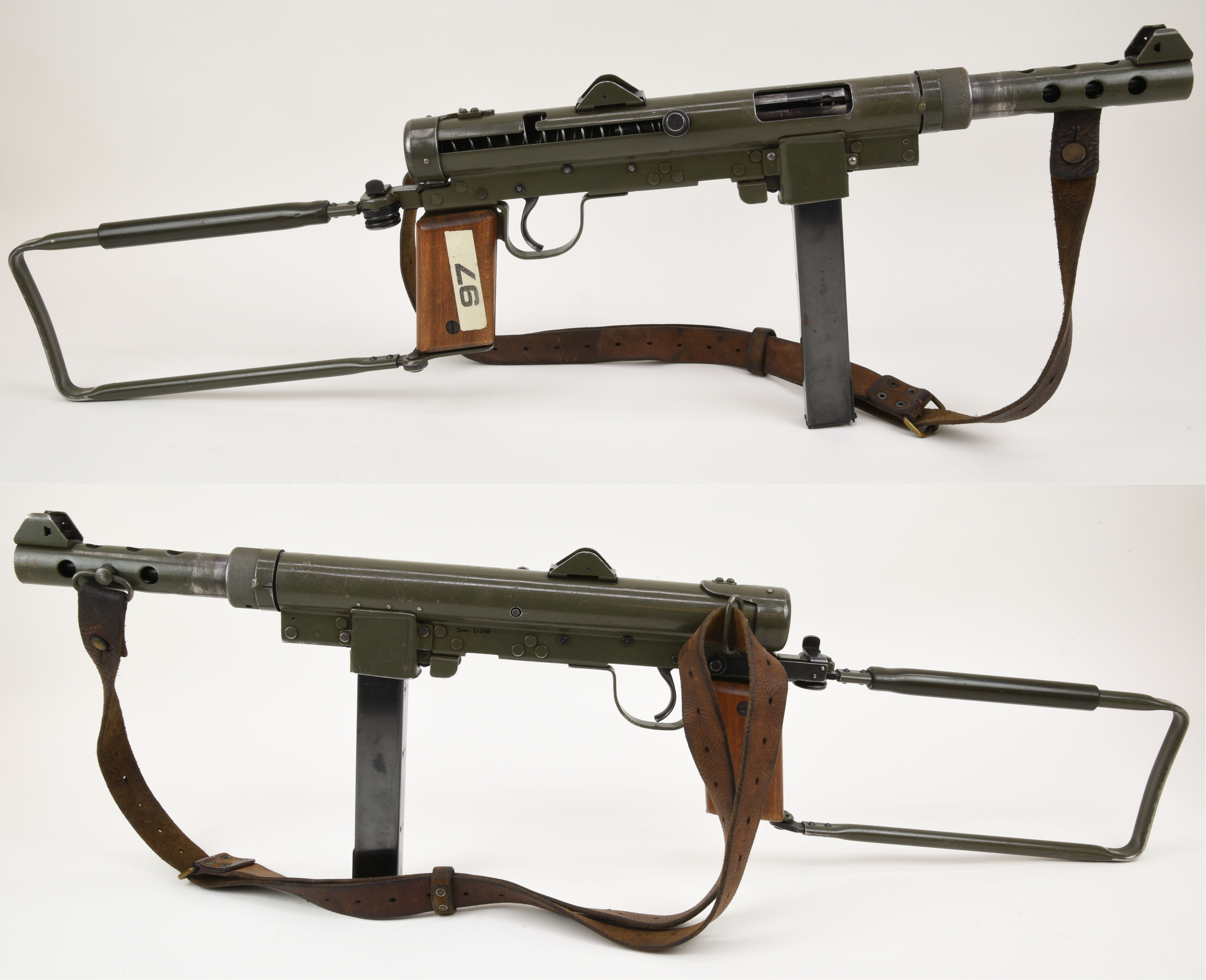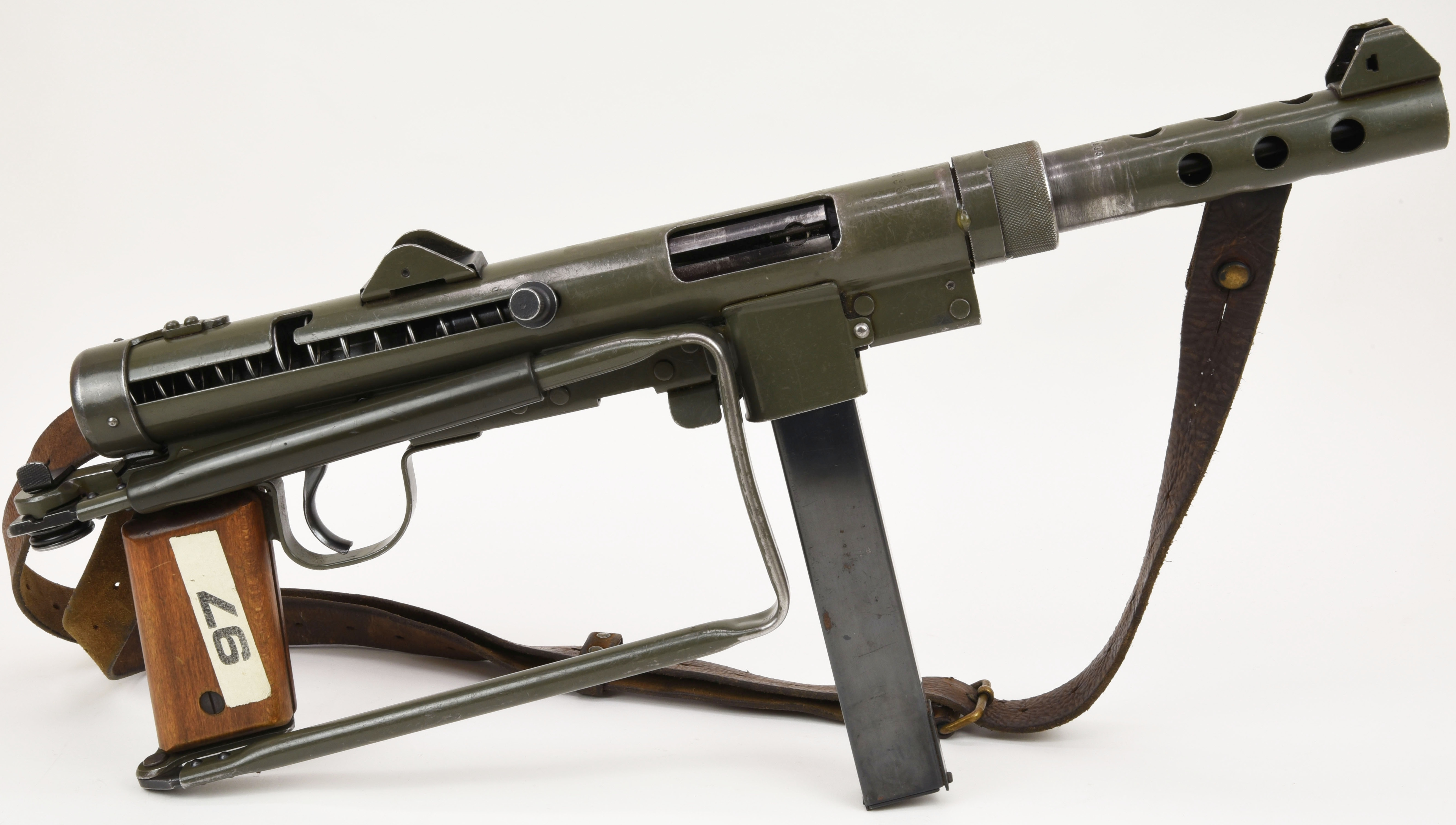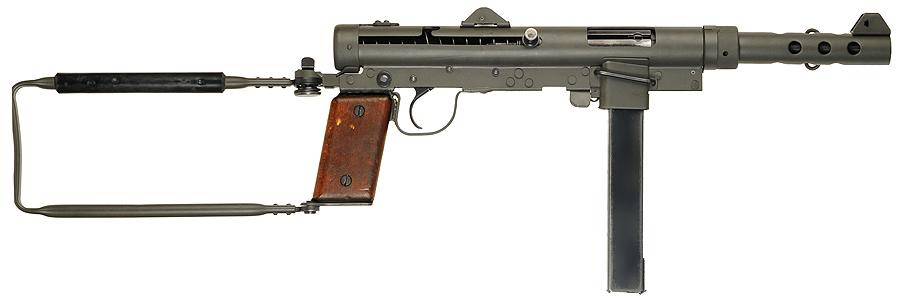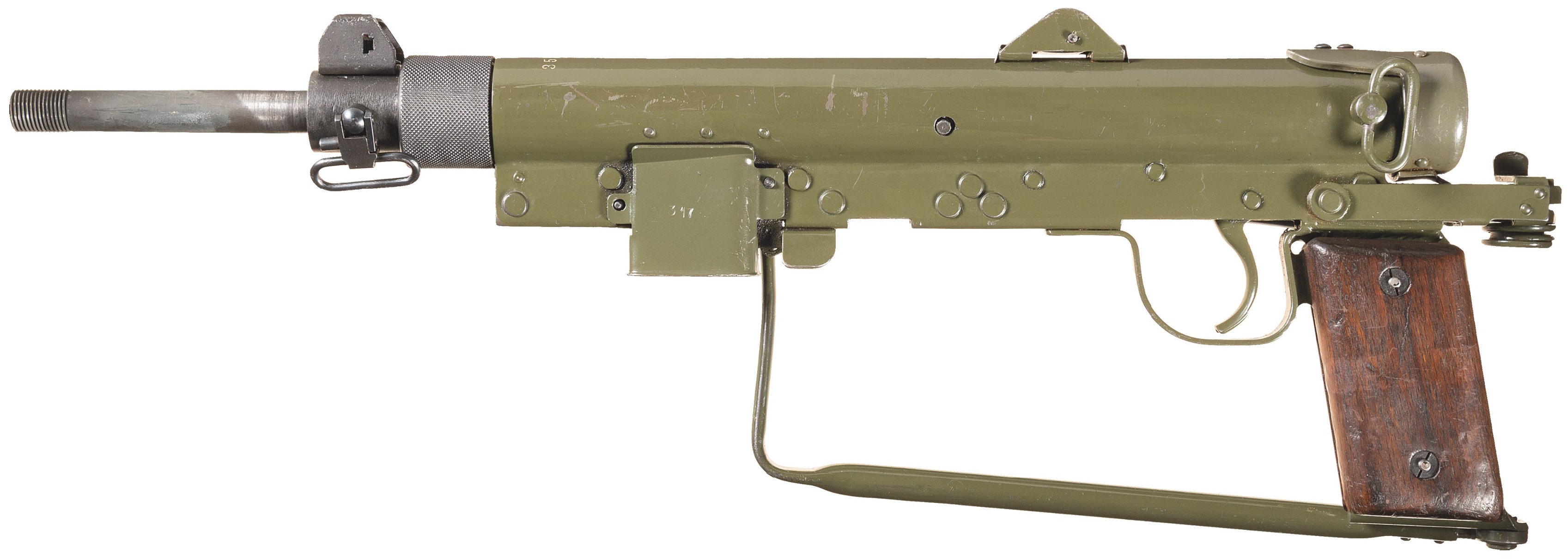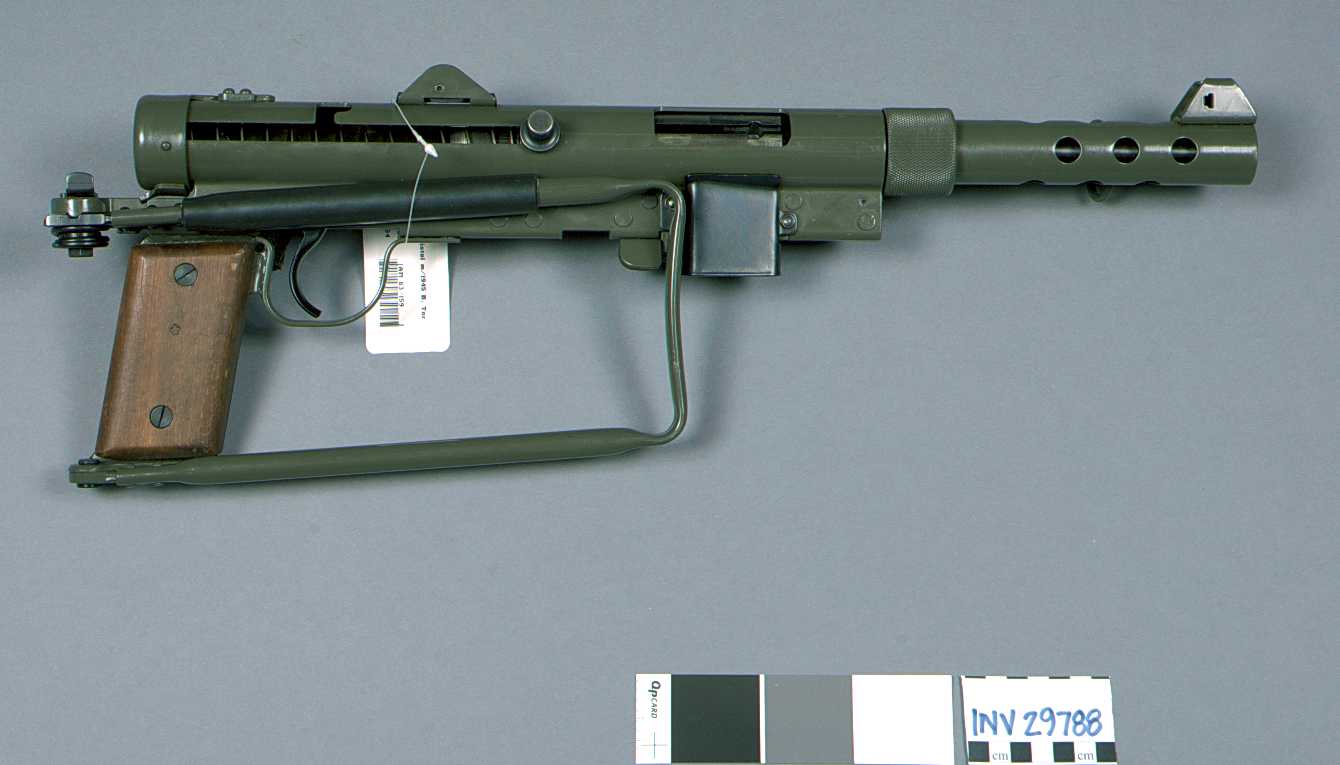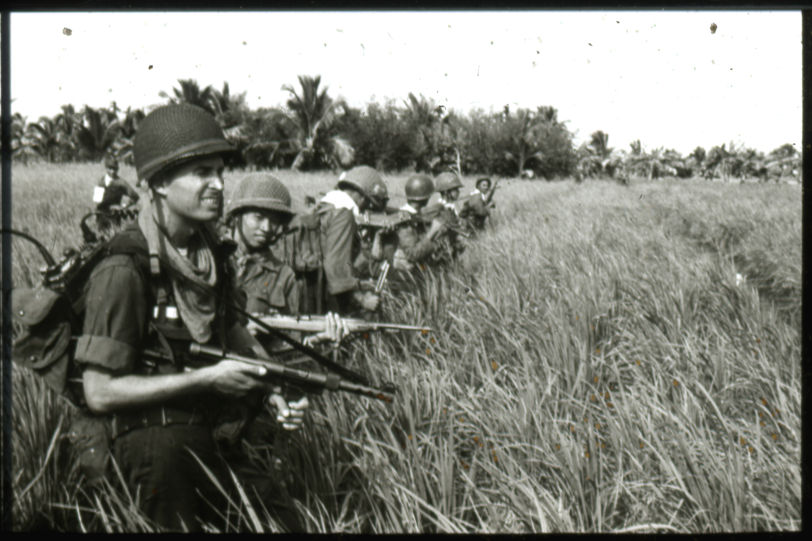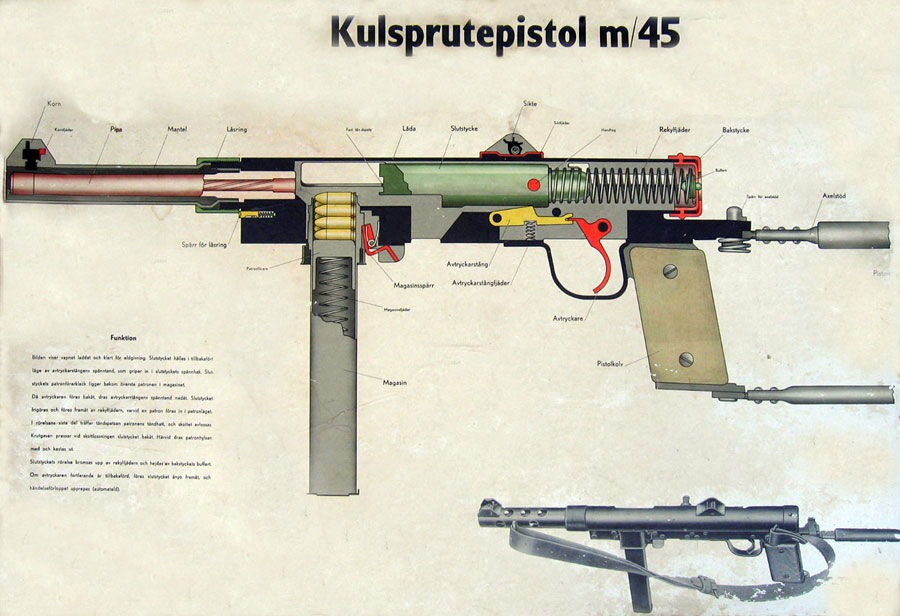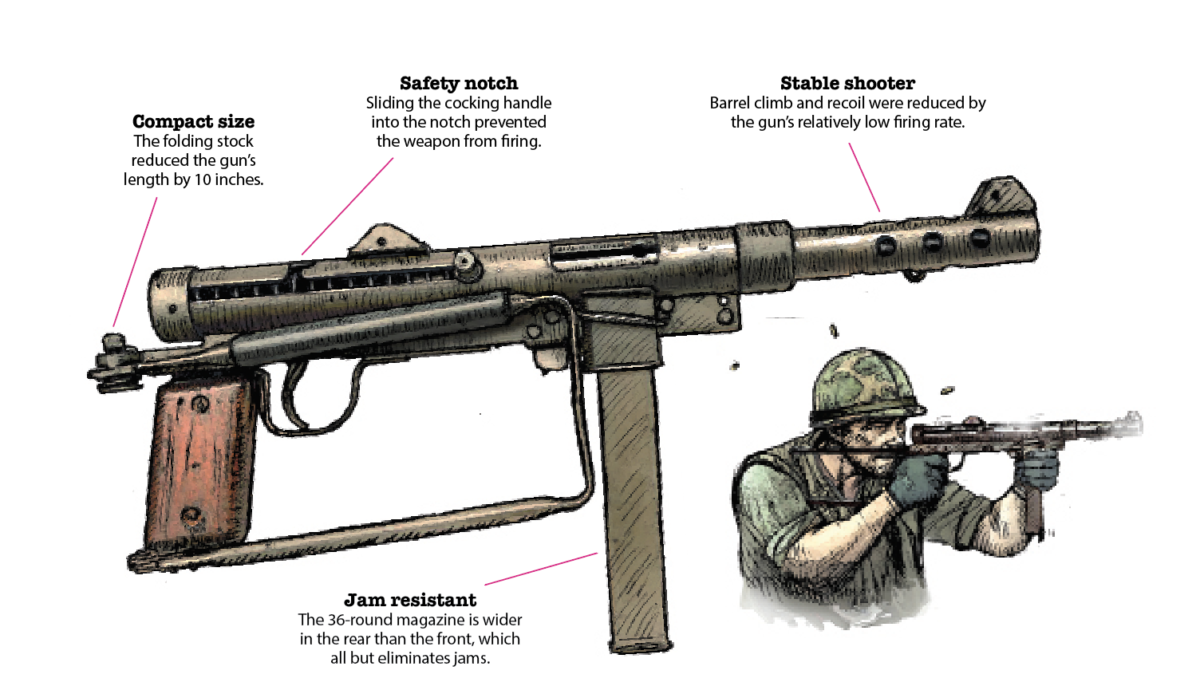Carl Gustaf M/45 SOG: Difference between revisions
Skizmophonic (talk | contribs) No edit summary |
Skizmophonic (talk | contribs) No edit summary |
||
| (2 intermediate revisions by the same user not shown) | |||
| Line 1: | Line 1: | ||
[[Category:Weapons]] | |||
[[Category:Weapons of Vietnam]] | |||
{| class="wikitable sortable" style="margin:auto;text-align: center;width:90%" | {| class="wikitable sortable" style="margin:auto;text-align: center;width:90%" | ||
|- | |- | ||
| Line 38: | Line 40: | ||
! rolspan=2 | [[Weight]] | ! rolspan=2 | [[Weight]] | ||
|- | |- | ||
|[[m/45]]||[[SMG]]||Auto||600 RPM||7.75° & 1.6° [[ADS]]||0.83||425 m/s||7.5 g (115.74 gr)||4.3 kg (9.48 lbs) | |[[m/45]]||[[Suppressed]]<br>[[SMG]]||Auto||600 RPM||7.75° & 1.6° [[ADS]]||0.83||425 m/s||7.5 g (115.74 gr)||4.3 kg (9.48 lbs) | ||
|- | |- | ||
|} | |} | ||
| Line 58: | Line 60: | ||
<hr> | <hr> | ||
The Carl Gustaf M/45 is a SMG designed by Gunnar Johansson, adopted in 1945 (hence the m/45 designation), and manufactured in Eskilstuna, Sweden. The m/45 was the standard submachine gun of the Swedish Army from 1945 to 1965. | The Carl Gustaf M/45 is a [[SMG]] designed by Gunnar Johansson, adopted in 1945 (hence the m/45 designation), and manufactured in Eskilstuna, Sweden. The m/45 was the standard submachine gun of the Swedish Army from 1945 to 1965. | ||
=HISTORY= | =HISTORY= | ||
The m/45 SMG was developed in 1944–45, incorporating and improving upon design elements from earlier submachine guns like the German [[MP 40]], British [[Sten]], and Soviet [[PPSh-41]] and [[PPS-43]]. After testing designs from Carl Gustafs Stads Gevärsfaktori and Husqvarna Vapenfabriks, the Carl Gustafs prototype was chosen and adopted as the Kpist m/45 in 1945. Despite its similar appearance, the Danish Hovea M/49 SMG is not derived from the m/45 but from Husqvarna's failed test model fm44. | The m/45 SMG was developed in 1944–45, incorporating and improving upon design elements from earlier submachine guns like the German [[MP 40]], British [[Sten]], and Soviet [[PPSh-41]] and [[PPS-43]]. After testing designs from Carl Gustafs Stads Gevärsfaktori and Husqvarna Vapenfabriks, the Carl Gustafs prototype was chosen and adopted as the Kpist m/45 in 1945. Despite its similar appearance, the Danish Hovea M/49 SMG is not derived from the m/45 but from Husqvarna's failed test model fm44. | ||
During the Vietnam War, the US Navy SEALs used the m/45 extensively. One of the gun's qualities which appealed to the US Navy was that the m/45 can fire almost immediately out of the water (over the beach). It also saw use by CIA operatives and advisers. In US service it was largely known as the "Swedish-K" or "K-Rifle". The US Navy was so impressed by the m/45 that when Sweden embargoed the export of weapons to the United States in 1966, Smith & Wesson was given the task of producing a copy. This was designated the Smith & Wesson [[M76]]. However, by the time the M76 was ready for combat deployment, the US Navy interest had largely evaporated. Many of the m/45s used by US forces and agencies were devoid of markings, implying clandestine use ("sanitized") | During the Vietnam War, the US Navy SEALs used the m/45 extensively. One of the gun's qualities which appealed to the US Navy was that the m/45 can fire almost immediately out of the water (over the beach). It also saw use by CIA operatives and advisers. In [[US]] service it was largely known as the "Swedish-K" or "K-Rifle". The US Navy was so impressed by the m/45 that when Sweden embargoed the export of weapons to the United States in 1966, Smith & Wesson was given the task of producing a copy. This was designated the Smith & Wesson [[M76]]. However, by the time the M76 was ready for combat deployment, the US Navy interest had largely evaporated. Many of the m/45s used by US forces and agencies were devoid of markings, implying clandestine use ("sanitized") | ||
<br>[https://en.wikipedia.org/wiki/Carl_Gustaf_m/45 SOURCE] | <br>[https://en.wikipedia.org/wiki/Carl_Gustaf_m/45 SOURCE] | ||
<hr> | <hr> | ||
Latest revision as of 08:00, 5 November 2024
| Factions | Weapon | Icon | Classes | Ammo |
|---|---|---|---|---|
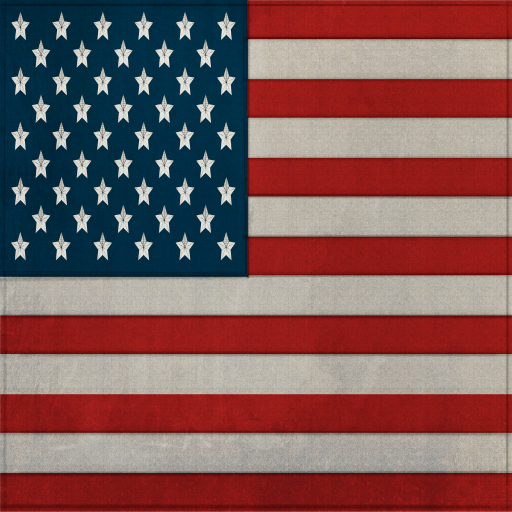 US |
 Carl Gustaf M/45 SOG |
 |
 Medic Medic Engineer Engineer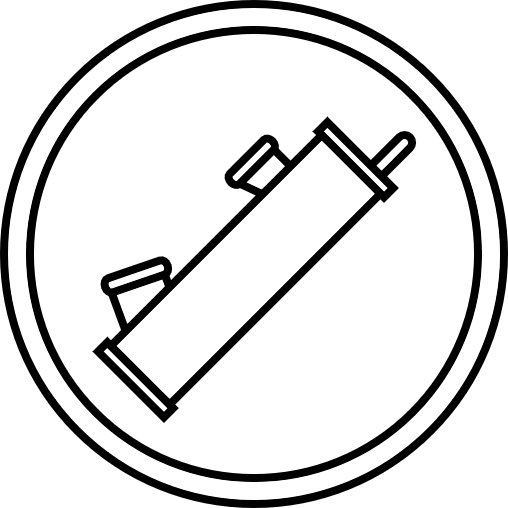 Radioman Radioman |
36 / 108 |
| Damage Base | Headshot × | Chest × | Stomach × | Leg × | Arm × | Reload Speed | |
|---|---|---|---|---|---|---|---|
| Partial | Empty | ||||||
| 36 | ×2.4 = 86.4 | ×1.3 = 46.8 | ×1.2 = 43.2 | ×0.8 = 28.8 | ×0.75 = 27 | 2.166 Seconds | 3 Seconds |
| Designation | Weapon Type | Fire Modes | Fire Rate | Bullet Spread ° | Range Modifier | Muzzle Velocity | Projectile weight | Weight |
|---|---|---|---|---|---|---|---|---|
| m/45 | Suppressed SMG |
Auto | 600 RPM | 7.75° & 1.6° ADS | 0.83 | 425 m/s | 7.5 g (115.74 gr) | 4.3 kg (9.48 lbs) |
| Full name | Caliber | Place of Origin | Date | Manufacturer | Barrel Length | Total Length | Weapon Script Name |
|---|---|---|---|---|---|---|---|
| Kulsprutepistol m/45 | 9x19mm | Sweden | 1945 | Carl Gustafs Stads Gevärsfaktori | 8.34 in (212 mm) + Suppressor |
21.65/31.81 in (550/808 mm) | weapon_m45_sog |
The Carl Gustaf M/45 is a SMG designed by Gunnar Johansson, adopted in 1945 (hence the m/45 designation), and manufactured in Eskilstuna, Sweden. The m/45 was the standard submachine gun of the Swedish Army from 1945 to 1965.
HISTORY
The m/45 SMG was developed in 1944–45, incorporating and improving upon design elements from earlier submachine guns like the German MP 40, British Sten, and Soviet PPSh-41 and PPS-43. After testing designs from Carl Gustafs Stads Gevärsfaktori and Husqvarna Vapenfabriks, the Carl Gustafs prototype was chosen and adopted as the Kpist m/45 in 1945. Despite its similar appearance, the Danish Hovea M/49 SMG is not derived from the m/45 but from Husqvarna's failed test model fm44.
During the Vietnam War, the US Navy SEALs used the m/45 extensively. One of the gun's qualities which appealed to the US Navy was that the m/45 can fire almost immediately out of the water (over the beach). It also saw use by CIA operatives and advisers. In US service it was largely known as the "Swedish-K" or "K-Rifle". The US Navy was so impressed by the m/45 that when Sweden embargoed the export of weapons to the United States in 1966, Smith & Wesson was given the task of producing a copy. This was designated the Smith & Wesson M76. However, by the time the M76 was ready for combat deployment, the US Navy interest had largely evaporated. Many of the m/45s used by US forces and agencies were devoid of markings, implying clandestine use ("sanitized")
SOURCE
